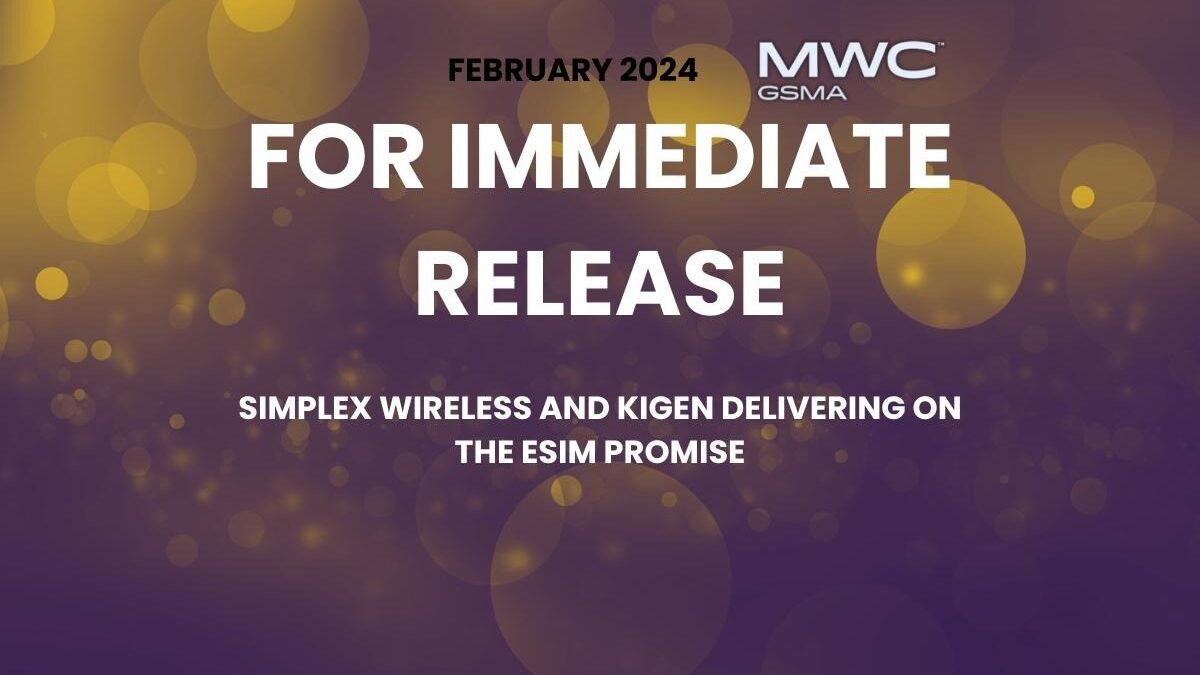
What makes Simplex Wireless stand out as an IoT Connectivity Provider in the market
February 21, 2024
PRESS RELEASE. Simplex Wireless and Simetric
February 24, 2024“This article contains some technical aspects of the eSIM SGP.32 specifications, to read up on an introduction to this please read this article: Read More
Limitations with the M2M and Consumer eSIM Specifications
The eSIM was created for the purpose to have the ability to change the Connectivity Service Provider (CSP aka MNO) Over-The-Air and remotely.
The eSIM has been in the market for over 10 years now and has been widely adopted by the industry. On consumer devices such as the iPhones it’s prevalent and in the automotive industry most of the new cars are cellular connected using the eSIM as well.
Even with the seemingly wide adoption of the eSIM specification it’s still has been a technology mainly for the major conglomerates and big logos to utilize. The previous eSIM specifications have worked well if you control the full chain of the ecosystem from hardware to the solution and the Connectivity Providers.
The eSIM promise has not really materialized to the IoT world. When we look at the typical IoT chain you have multiple roles, Module Makers, OEM / ODMs, Technology Providers and then the Solution Maker. The Solution Maker is the one that puts the technology together for their solutions and goes to market to sell their product; in this example “Fifi’s Puppy Tracker” which is a Pet Finder solution.

There has not been a clear consensus if the industry should use the M2M Specification (SGP.02) or the Consumer Specification (SGP.22). The M2M specification is very Connectivity Service Provider (CSP aka MNO) centric making it challenging to perform an eSIM swap operation and the Consumer specification was very OEM centric requiring user interaction on the device to make the swap. With these limitations there has always been the question of which specification to implement on the IoT device and will the end Solution Maker be able to benefit from it.
In addition, when obtaining the eSIM solution from the CSP it would be counter intuitive for them to make it easy for the customer to swap to another CSP, as they would lose revenue.
Here is why the new specification is going to deliver on the eSIM promise.
Just to repeat the promise: The eSIM promise is to allow remote Over-The-Air changing of the CSP. Avoid carrier lock in and have flexibility to choose a provider based on the condition that suits the Solution Maker. As an example the maker can select the CSP based on which country the device is deployed in in the same SKU of the device.
CSP flexibility
With the new specification the eSIM Service Management functionality has been decoupled from Connectivity Service Provider function. The Solution Maker will have an eSIM Service Management Provider (eSMP) independent from their CSP. They will be able to negotiate contracts with one or many CSP and then make the eSIMs available through their EIM server.

This is the most sought-after feature of eSIM from the perspective of Solution Makers. The spec will allow a standard mechanism for the ecosystem to work together, and the MNOs will have an opportunity to provide services in a more cost-effective fashion in the form of eSIMs.
eSMP flexibility
With the new specification it has been defined that the EIM address can be updated remotely. This allows the Solution Maker to have flexibility of their eSMP down the road.
Simplex Wireless is working together with Kigen to use their SIM card (eUICC) based IPAe (available on Kigen IOT (SGP.32) OS powered cards) to communicate with the Simplex EIM server. This showcases the new specifications flexibility towards the Solution Makers so that they can deploy IoT devices and switch eSMP providers.
OEM / device independence
One of the most important changes that the IoT eSIM specification introduced officially was the SIM card (eUICC) based IPA client (IPAe). What this offers is huge for the IoT ecosystem.
Having the IPA constrained in the SIM card allows flexibility for the ecosystem. The Solution Maker can go to an eSMP and acquire the SIM cards with the IPAe and insert it in a device and they will now be eSIM enabled in a functional way.
The Technology Provider, OEM/ODM and Module Maker do not need to select which eSIM technology they support as it will work independently. This removes the need to offer multiple SKUs and allows the ability to scale and reduce costs.
In addition, the extra added benefit of the approach is that the SIM based IPAe will work on “older” devices, enabling them to the eSIM ecosystem and making them relevant again.
Summarizing the path for massive eSIM adoption.
Based on these points it is very clear why the industry is so excited about the new specification coming to market and why the SIM card based eSIM management is key. It’s like having your cake and eating it too.
Simplex Wireless is both an eSMP and a CSP. We provide these services independently meaning that a Solution Maker can acquire either our eSIM Management as a Service or eSIMs or both in whatever fits their choosing.
Reach out to us here https://www.simplexwireless.com/contact/
Jan Lattunen, Simplex Wireless
About the Author: Jan Lattunen manages Sales and Marketing for Simplex Wireless. Jan has 20 years’ experience in working with SIM card technology and was involved in launching the eSIM in North America with major carriers and OEMs. His expertise in telecommunications is around SIM cards. On a personal note, Jan is a family man and avid cyclist with advocacy for safety in the roads. You can connect with Jan on https://linkedin.com/in/JanLattunen

